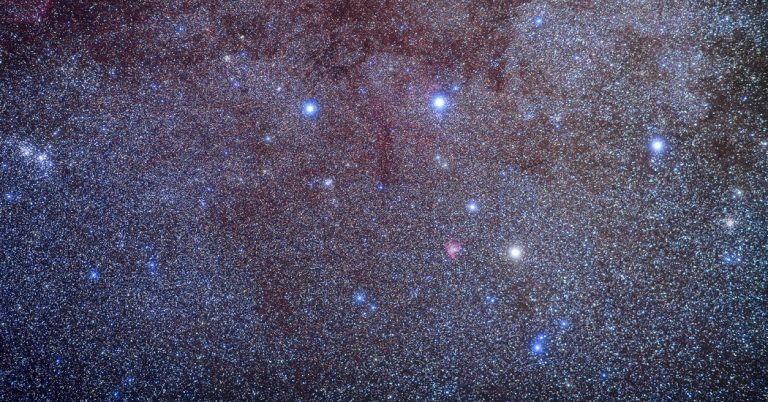No matter what stock market analysts, political pollsters and astrologers might say, we cannot predict the future. In fact, we can’t even predict the past.
So much for the work of Pierre-Simon Laplace, the French mathematician, philosopher and king of determinism. In 1814, Laplace stated that if it were possible to know the velocity and position of every particle in the universe at a particular moment—and all the forces acting on them—“to such an intellect nothing would be uncertain, and the future , like the past, would be the present in it.”
Laplace’s dream remains unfulfilled because we cannot measure things with infinite precision, and so tiny errors propagate and accumulate over time, leading to ever greater uncertainty. As a result, in the 1980s astronomers, including Jaques Laskar of the Paris Observatory, concluded that computer simulations of planetary motions were not reliable when applied more than 100 million years into the past or future. By comparison, the universe is 14 billion years old and the solar system is about five billion years old.
“You can’t cast an accurate horoscope for a dinosaur,” Scott Tremaine, an orbital dynamics expert at the Institute for Advanced Study in Princeton, NJ, recently commented in an email.
The ancient astrological chart has now become even murkier. A new set of computer simulations, which take into account the effects of stars passing beyond our solar system, have effectively reduced scientists’ ability to look back or forward by another 10 million years. Previous simulations had considered the solar system as an isolated system, a clock universe in which the main perturbations to planetary orbits were internal, coming from asteroids.
“Stars matter,” said Nathan Kaib, a senior scientist at the Planetary Science Institute in Tucson, Ariz. He and Sean Raymond of the Laboratoire d’Astrophysique de Bordeaux in France published their results in the Astrophysical Journal Letters in late February.
Researchers have discovered that a Helium-like star named HD 7977, currently 247 light-years away in the constellation Cassiopeia, could have passed close enough to the Sun about 2.8 million years ago to rattles the larger planets into their orbits.
This added uncertainty makes it even more difficult for astronomers to predict more than 50 million years into the past, to relate temperature anomalies in the geologic record to possible changes in Earth’s orbit. This knowledge would be useful as we try to understand the climate changes occurring today. About 56 million years ago, said Dr. Kaib, Earth apparently went through the Paleocene-Eocene Thermal Maximum, a period lasting more than 100,000 years in which average global temperatures rose by as much as 8 degrees Celsius.
Was this warm spell triggered by some change in Earth’s orbit around the sun? We may never know.
“So I’m no expert, but I think this is the warmest period, like in the last 100 million years,” said Dr. Kaib. “And it’s almost certainly not caused by the Earth’s orbit itself. But we do know that long-term climate fluctuations are linked to Earth’s orbital fluctuations. And so if you want to understand climate anomalies, it helps to be sure of what the Earth’s orbit is doing.”
Dr. Tremaine noted, “The simulations were done carefully and I believe the conclusion is correct.” He added, “This is a relatively small change in our understanding of Earth’s orbital history, but it is conceptually important.”
The really interesting story, he said, is how chaos in Earth’s orbit could have left a mark on the paleoclimate record.
The ability to track the motions of stars just beyond the solar system has been dramatically improved by the European Space Agency’s Gaia spacecraft, which has been mapping the locations, motions and other properties of two billion stars since its launch in 2013.
“For the first time we can actually see individual stars,” said Dr. Kaib, “project them back in time or forward and figure out which stars are close to the sun and which ones aren’t, which is really cool. .”
According to his calculations, about 20 stars come within a parsec (about 3.26 light-years) of the sun every million years. HD 7977 could have come as close as 400 billion miles from the sun — about the distance from the Oort cloud, a vast reservoir of icy comets at the edge of the solar system — or remained a thousand times farther away. Gravitational effects from the closest encounter could have rattled the orbits of the outer giant planets, which in turn could have rattled the inner planets like Earth.
“It’s potentially powerful enough to change simulation predictions of what Earth’s orbit was like about 50 million years ago,” said Dr. Kaib.
As a result, he said, almost anything is statistically possible if you look far enough ahead. “So you find that, for example, if you go ahead billions of years, not all planets are necessarily stable. There is actually about a 1 percent chance that Mercury will hit either the sun or Venus during the next five billion years.”
Whatever happens, chances are we won’t be around to see it. Stuck in the present, we don’t know for sure where we came from or where we are going. future and past give way to myth and hope. However, we move forward trying to look beyond our horizons in time and space. As F. Scott Fitzgerald wrote in “The Great Gatsby”: “So we beat, boats against the current, we return endlessly to the past.”




